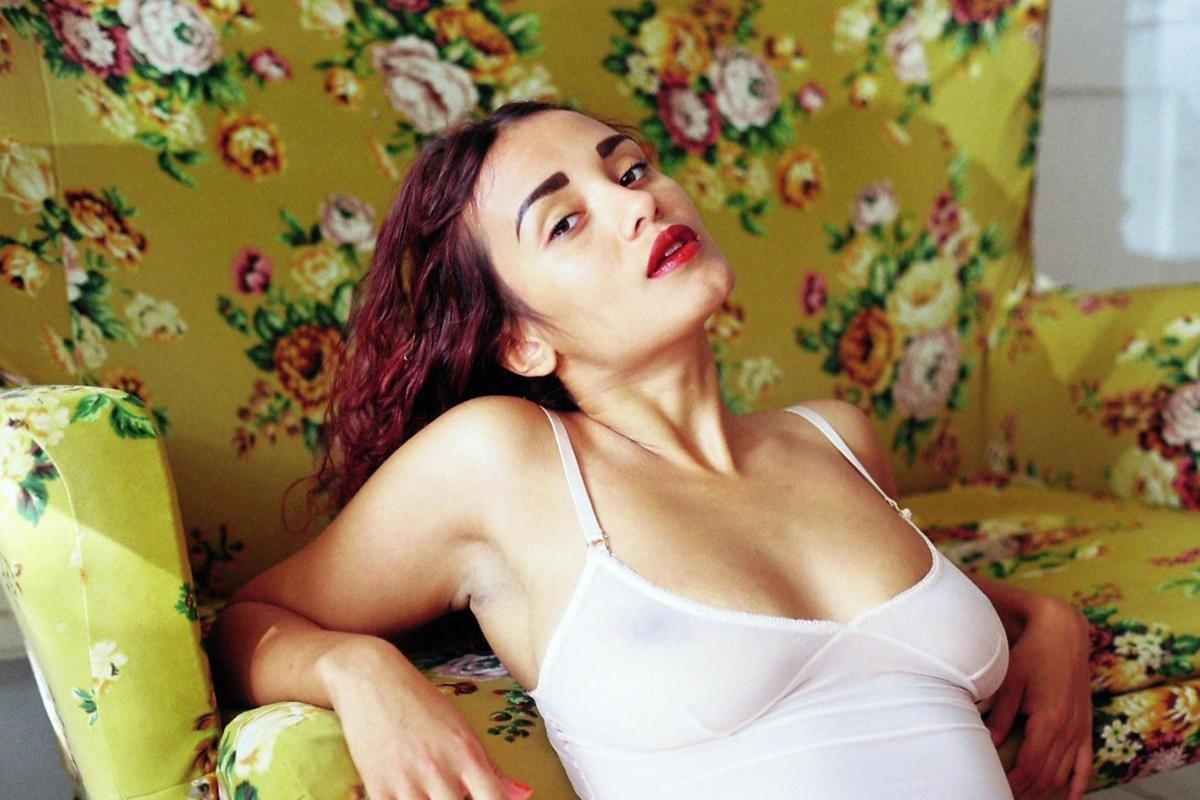
 Girl on Girl photographer Charlotte Jansen celebrates the female gaze
Girl on Girl photographer Charlotte Jansen celebrates the female gaze
In her book 'Girl on Girl', featuring 40 female artists exploring self-expression in the internet age, Charlotte Jansen gives us a glimpse into the world of photography where women look at women. We got the chance to interview her about the female gaze and the future of female self-expression.

Amanda Charchian, from Ana in Costa Rica, 2015
You released Girl on Girl last year April. What inspired you to make a book that is exclusively images of women by women?
Since the launch of Instagram in 2010, there's been a lot of discussion about women taking photographs of themselves and others - but a lot of the discussion seemed to centre on selfies and the digital environment rather than how and why women photograph and what it might contribute to our worldview.

Izumi Miyazaki, Sandwich, 2013
The male gaze is a concept used to describe the sexualized way in which women are portrayed visually, as being “consumed” as an object by this gaze. How does the “female gaze” reverse or fight this?
I don't think the female gaze exists as a counterpoint or reaction to the male gaze - though of course, the term itself emerges from the essay by Laura Mulvey in which she coins the “male gaze”. The female gaze is still being defined, though it's existed as long as the male gaze, it's not been considered in art history. I think in our moment some of its qualities are to dismantle the rigid structures of the patriarchy by presenting identity, sexuality, gender, bodies and relationships as fluid and ambiguous, and to visualise new ways connect to ourselves and each other.

Isabelle Wendel, Field 1, 2015, Courtesy the artist
Do you think the female gaze in contemporary art is a political tool or a tool for introspection, or both?
It's both - and so much more. As many artists as there are, you get just as many definitions or strategies.
Is there a reason you chose photography as the medium exhibited in the book?
Yes, I feel that the female gaze is most relevant and effective in photography as photography is the most prolific, potent and prevalent visual media we have today. It goes beyond language and borders. It's definitely the democratic medium.

Juno Calypso, Reconstituted Meat Slices, 2013, Courtesy the artist
There is an interesting paradox of the excessive use of the female body in sexualized ways in advertising and other visual media culture, and censorship of female bodies on Instagram etc. Where do you think this contradiction stems from?
Capitalism. It bulldozes everything and it's very hard not to be complicit...
Artistic self-expression in the internet and social media age is an element that is explored in “Girl on Girl”. In your interviews or personal experience, do you think the constant hyper-exposure to images and visuals has changed the form or motivation for self-representation and self-expression?
Yes, definitely…there are certain styles and aesthetics that have come from the internet, for one. It also encourages super fast production, which doesn't necessarily mean poorer quality images but just that the individual image is less important than the whole stream, there's more of a need to create a narrative than just one really high impact image. So community and engagement over time is also more important - that also shapes the way some photographers work and the themes they deal with.

Marianna Rothen, Untitled #11 (Women of Canterbury), 2011
In working with and interviewing the artists in the book, did a coherent narrative emerge in the work from different artists or were the motivations behind the pieces more varied?
I wasn't really looking for one, but there are definitely threads that connect between some of the artists and the book is loosely arranged according to those interests: such as activism, redressing history, looking at bodies and archetypes, beauty and cosmetics and myths around femaleness, hyper-femininity, staging feminine identity, sexuality, self-enquiry...
What do you see the relationship being between feminism and the art in Girl on Girl?
Feminism is an interest of some of the artists in the book and it's my interest in putting a book like this together, but it's not the concern of all of the artists and I don't think we should always assume women artists who make work with their bodies are interested in feminism or interpret it in that way.

Pinar Yolaçan, Untitled (from Like a Stone), 2011, Courtesy the artist.
How does the art in Girl on Girl situate in the broader history of art – is it a novelty or is it perhaps something that is only now gaining a platform?
This is all recent work, made in the last five to ten years. Some of it will become iconic over time, and inevitably some will be forgotten, but I think it's important to.look at who is making impactful work now and analyze why that work is resonating with people. It's very much the start of something, no doubt that the female gaze will keep evolving in the future.
Are there some female artists working with these themes that you’ve come across since the publication of Girl on Girl that we should keep an eye out for?
Yes! I keep discovering more and more! At the moment I love Emily Rose England Paula Winkler and Keyezua. All artists I consider to be pushing the female gaze forward.
Buy Girl on Girl here.
